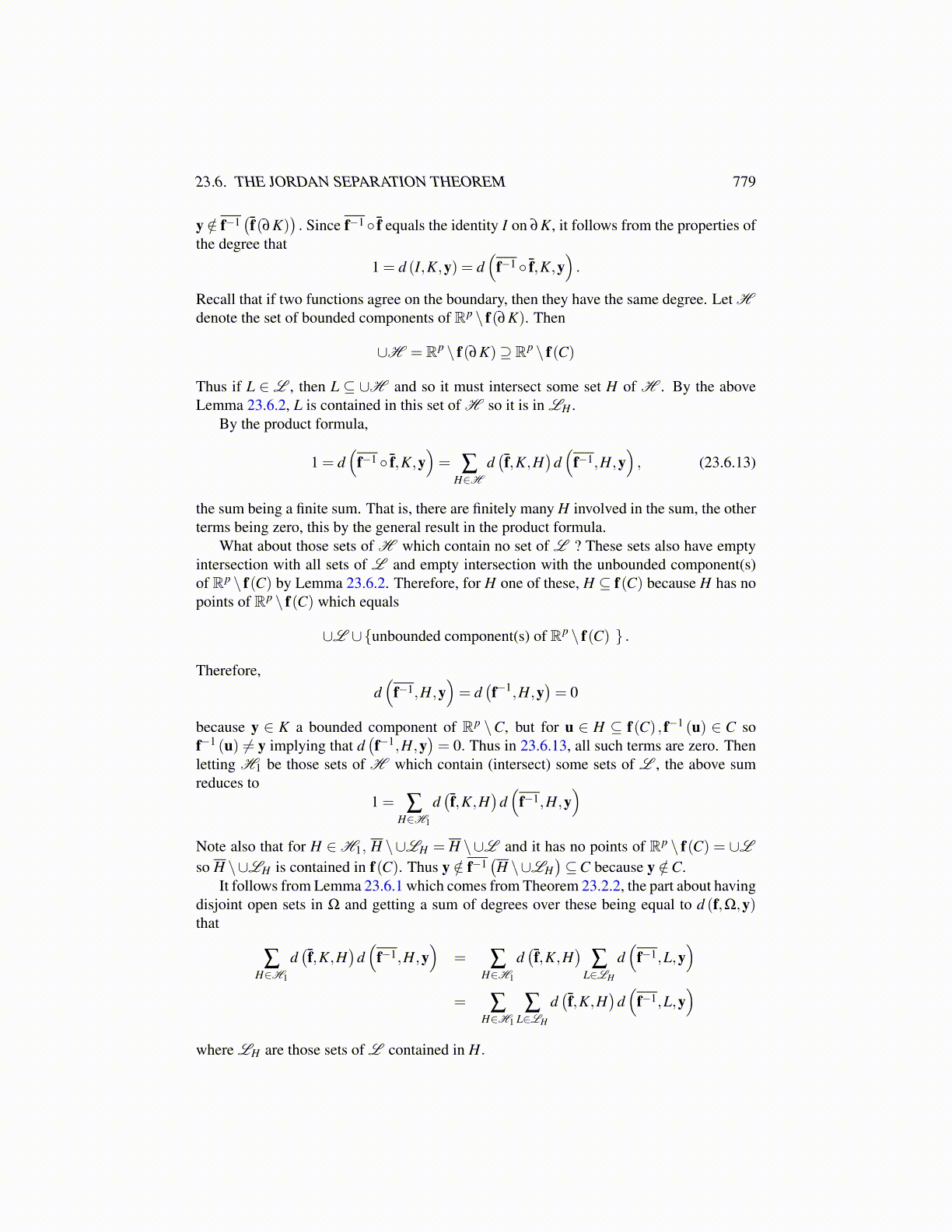
23.6. THE JORDAN SEPARATION THEOREM 779
y /∈ f−1(f̄(∂K)
). Since f−1 ◦ f̄ equals the identity I on ∂K, it follows from the properties of
the degree that1 = d (I,K,y) = d
(f−1 ◦ f̄,K,y
).
Recall that if two functions agree on the boundary, then they have the same degree. Let Hdenote the set of bounded components of Rp \ f(∂K). Then
∪H = Rp \ f(∂K)⊇ Rp \ f(C)
Thus if L ∈L , then L ⊆ ∪H and so it must intersect some set H of H . By the aboveLemma 23.6.2, L is contained in this set of H so it is in LH .
By the product formula,
1 = d(
f−1 ◦ f̄,K,y)= ∑
H∈Hd(f̄,K,H
)d(
f−1,H,y), (23.6.13)
the sum being a finite sum. That is, there are finitely many H involved in the sum, the otherterms being zero, this by the general result in the product formula.
What about those sets of H which contain no set of L ? These sets also have emptyintersection with all sets of L and empty intersection with the unbounded component(s)of Rp \ f(C) by Lemma 23.6.2. Therefore, for H one of these, H ⊆ f(C) because H has nopoints of Rp \ f(C) which equals
∪L ∪{unbounded component(s) of Rp \ f(C) } .
Therefore,d(
f−1,H,y)= d
(f−1,H,y
)= 0
because y ∈ K a bounded component of Rp \C, but for u ∈ H ⊆ f(C) , f−1 (u) ∈ C sof−1 (u) ̸= y implying that d
(f−1,H,y
)= 0. Thus in 23.6.13, all such terms are zero. Then
letting H1 be those sets of H which contain (intersect) some sets of L , the above sumreduces to
1 = ∑H∈H1
d(f̄,K,H
)d(
f−1,H,y)
Note also that for H ∈H1, H \∪LH = H \∪L and it has no points of Rp \ f(C) = ∪Lso H \∪LH is contained in f(C). Thus y /∈ f−1
(H \∪LH
)⊆C because y /∈C.
It follows from Lemma 23.6.1 which comes from Theorem 23.2.2, the part about havingdisjoint open sets in Ω and getting a sum of degrees over these being equal to d (f,Ω,y)that
∑H∈H1
d(f̄,K,H
)d(
f−1,H,y)
= ∑H∈H1
d(f̄,K,H
)∑
L∈LH
d(
f−1,L,y)
= ∑H∈H1
∑L∈LH
d(f̄,K,H
)d(
f−1,L,y)
where LH are those sets of L contained in H.